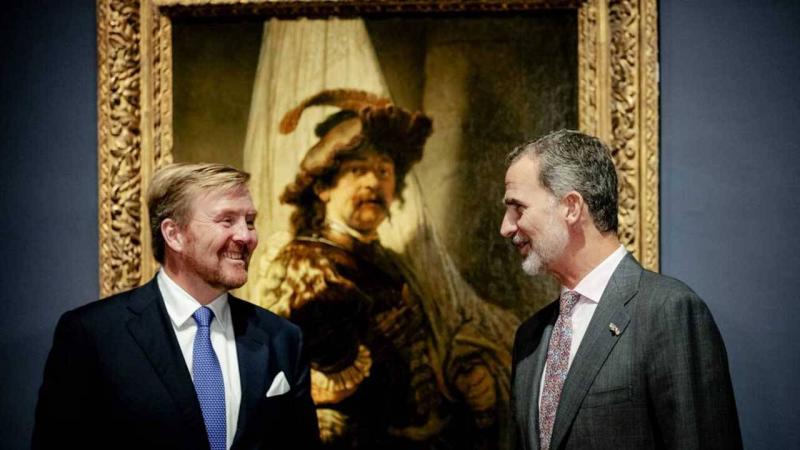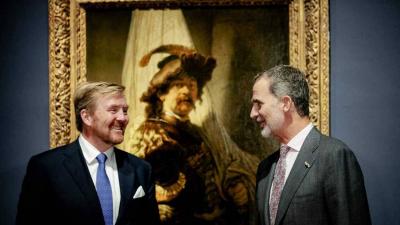The Rothschild family signed a letter of intent on Wednesday with the Netherlands to sell the painting "The Standard Bearer" by Rembrandt, after the Dutch government expressed its willingness to pay 150 million euros (about 170 million dollars) for it, as confirmed by the Ministry of Culture.
Michel Hendriks, spokesperson for the Dutch Ministry of Culture, told AFP that the painting would be "for the first time in the hands of the Netherlands" if parliament approves the allocation of this amount, stating that he is "optimistic" about gaining legislative support. Hendriks noted that the acquisition of "the last painting of this caliber by Rembrandt" by the Netherlands represents "a unique opportunity."
Paris announced on Tuesday that the artwork classified as a "national treasure" in France, valued at approximately 165 million euros, could again go on the art market after the French state recently decided against acquiring it.
The Dutch Ministry of Culture described "The Standard Bearer" in a statement as "one of Rembrandt's masterpieces (...) closely linked to the history of the Netherlands." They added, "This work of art has been privately owned for centuries, with its most notable owner being the King of England, followed by de Rothschild since 1844."
This painting, created by the Dutch artist in 1636 when he was around thirty, belongs to members of the Rothschild family who wish to sell it. The painting will be available for purchase through a public-private financing scheme, with the Rembrandt Association contributing 15 million euros, while the Rijksmuseum Fund will provide ten million euros.
The statement quoted Dutch Culture Minister Ingrid van Engelshoven saying that this painting "is returning home forever after a journey of several centuries." Meanwhile, Rijksmuseum director Taco Dibbits expressed, "For generations, we have dreamed of bringing 'The Standard Bearer' back to our country," noting that the museum houses 22 of the artist's total of 340 paintings. Dibbits explained that the significance of this painting lies in its "quality" and that it "represents Rembrandt's artistic breakthrough."




